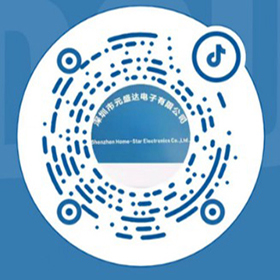Hot search keywords: Outdoor energy storage power development Small Appliance Power Solutions
Whether smart phones or other electronic products, as long as the use of lithium batteries as storage energy, then it is necessary to use lithium battery protection board or in the circuit design to haveLithium battery protection chip. From the following figure, we can understand that whether the use of a separate lithium battery protection board or the design of protection circuit must have these protection functions, we focus on the following six major functions.
First, overcharge protection
Overcharge protection refers to the uncertain risks that may arise when the voltage rises beyond the reasonable range during the charging process of lithium batteries. The overcharge protection function of the protection board is to monitor the voltage of the battery pack in real time. When the battery is charged to the vertex of the safe voltage range, it will cut off the power supply to prevent the voltage from continuing to rise, so as to play a protective role.
Overcharge protection function: When charging, the protection board will monitor each string voltage of the battery pack in real time, as long as one string voltage reaches the overcharge protection value (the default overcharge voltage of three yuan is4.25V±0.05V, the overcharge voltage of lithium iron defaults to3.75V±0.05V), the protective plate will cut off the power, and the entire battery will stop charging.

Two, over put protection
Overdischarge protection refers to: lithium battery in the process of discharge, with the decline of voltage, if the electricity is exhausted, lithium battery internal chemical materials will lose activity, resulting in no charge or capacity decline. The over-discharge protection function of the protection board is to monitor the voltage of the battery pack in real time, when the discharge to the lowest point of the battery voltage, cut off the power supply, to prevent the continued decline of the voltage, so as to play a protective role.
Over-discharge protection function:
During discharge, the protection board will monitor each string of voltage of the battery pack in real time, as long as one of the strings of voltage reaches the overdischarge protection value (the three-way overdischarge voltage default is2.7V±0.1V, the overdischarge voltage of lithium iron defaults to2.2V±0.1V), the protective plate will cut off the power, and the entire battery will stop discharging.

Three, over current protection
Overcurrent protection refers to: when the lithium battery supplies power to the load, the current changes with the voltage and power. When the current is very large, it is easy to burn the protection board, battery or device. The overcurrent protection function of the protection plate is to monitor the current of the battery pack in real time during the process of charging and discharging. When the current exceeds the safe range, the current is cut off to prevent excessive current from damaging the battery or equipment, so as to play a protective role.
Overcurrent protection function: when charging and discharging, the protection board will monitor the battery current in real time. As long as it reaches the set overcurrent protection value, the protection board will cut off the power supply, and the whole set of lithium batteries will stop charging and discharging.
Four, short circuit protection
Short circuit refers to: without any load directly connected to the positive and negative terminals of the battery, the formation of short circuit. A short circuit may damage batteries and devices.
Short circuit protection function: when lithium battery is accidentally caused by short circuit (such as wrong wire connection, wrong wire, water and other reasons), the protection plate will be in a very short time (0.00025 Seconds), cut off the current through, so as to play a protective role.
Five, temperature protection
Temperature control protection: The temperature control probe of the hardware protection board is welded to the internal motherboard of the protection board, not removable. The temperature probe can monitor the temperature change of the battery pack or working environment in real time. When the temperature exceeds the set value, the hardware temperature protection default: charging-20~55℃, discharge-40~75℃, can be changed according to the customer's requirements, the customer cannot set), disconnect the charge and discharge of the battery string. When the temperature recovers within a reasonable range, the charge and discharge can continue to protect the battery string.
Vi. Balanced protection
Passive equalization refers to: when there is voltage inconsistency between the battery strings, the protection plate will adjust the voltage of each string uniformly during the charging process.
Balancing function: When the protection board detects the voltage difference between the lithium battery series and series, the number of high voltage series reaches the equilibrium value when charging (three:4.13VLithium iron3.525V) to about30-35Milliampere current is discharged (consumed) with equalizing resistance, and other low voltage series continue charging. Continue until full.
If you also want to know more about different protection device information, welcome to inquireYuan Shengda, you can also consult online/Leave a message and communicate directly with customer service.
【Article label】 Yuan Shengda lithium battery protection chip
【Responsible editor】Yuan Shengda
 official account
official account Douyin
DouyinTelephone
